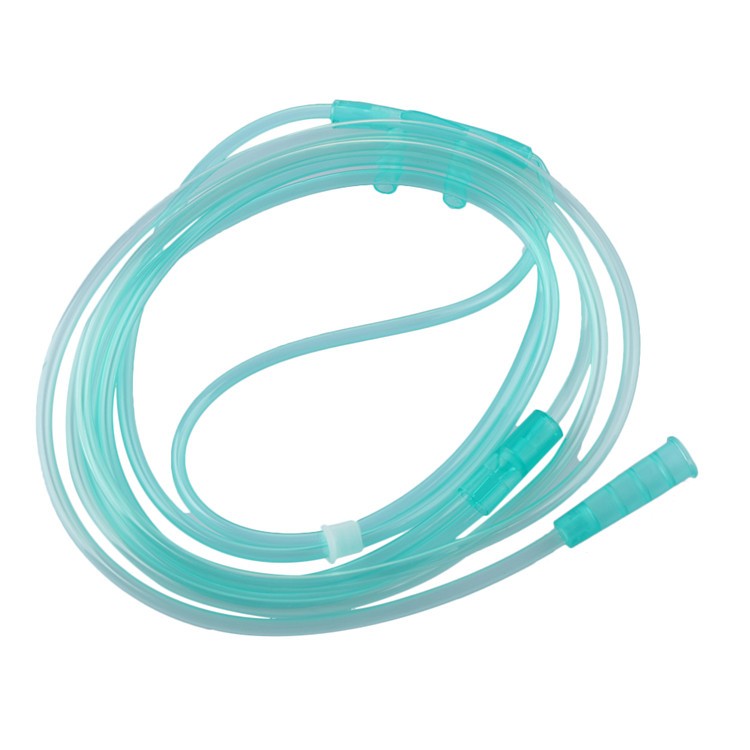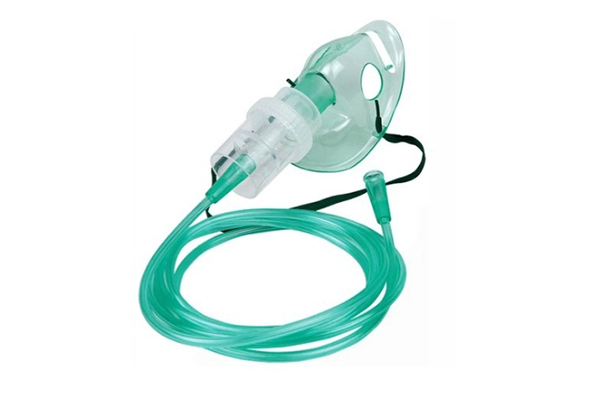When it comes to providing essential respiratory support, medical oxygen masks are indispensable medical devices. This article delves into the world of oxygen therapy and oxygen delivery, explaining how these simple oxygen solutions work, the various types of oxygen masks available, and why understanding their nuances is crucial for healthcare professionals. Whether you’re a hospital procurement manager, a medical supply distributor, or a clinic administrator, this guide provides valuable insights into ensuring your patients receive the adequate oxygen they need.
Understanding Oxygen Therapy and the Need for Oxygen Masks
Oxygen therapy is a vital medical treatment that provides patients with supplemental oxygen when they aren’t getting enough oxygen naturally. This might be due to various respiratory conditions like pneumonia, chronic obstructive pulmonary disease (COPD), or during emergencies where oxygen levels are critically low. Think of it like giving your body an extra boost of the very air it needs to function. When someone struggles to inhale enough oxygen from room air, a face mask becomes a crucial tool. These masks are used to deliver a higher oxygen concentration than what’s available in the surrounding environment. For instance, after surgery or during an acute illness, a patient might temporarily need oxygen therapy. A doctor will assess the patient’s oxygen saturation using a pulse oximeter or an arterial blood gas test to determine if they need supplemental oxygen.

How Medical Oxygen Masks Facilitate Oxygen Delivery
So, how do these oxygen masks work their magic? Essentially, they create a reservoir for oxygen, allowing the patient to inhale a higher percentage of oxygen. The oxygen tank or central oxygen supply is connected to the mask via tubing. When the patient inhales, they draw in the gas that’s being supplied. Most simple oxygen masks have vents that allow exhaled carbon dioxide to escape, preventing it from being rebreathed. This is important because accumulating carbon dioxide can be harmful. Different types of oxygen masks offer varying levels of control over the oxygen concentration being delivered. Some masks allow for a fixed flow of oxygen, while others might mix the supplied oxygen with room air. The key is to provide the patient with enough oxygen to maintain a healthy oxygen level in their blood. Our medical oxygen masks at ZhongXing are designed to ensure efficient and reliable oxygen delivery, offering both comfort and effectiveness.
Exploring the Diverse Types of Oxygen Masks Available
The world of oxygen masks isn’t a one-size-fits-all scenario. There’s a range of options, each designed for specific needs and levels of support. Simple face masks are a common choice for patients who require a moderate amount of supplemental oxygen. These masks cover the mouth and nose and are held in place by an elastic strap. Then there are nasal cannulas, which are less intrusive, featuring two small prongs that fit into the nostrils to supply oxygen. For patients needing higher concentrations of oxygen, non-rebreather masks come into play. These masks have a reservoir bag that fills with pure oxygen, and they incorporate one-way valves to prevent exhaled air from mixing with the fresh gas in the bag. Venturi masks are another type, known for delivering a precise and fixed flow of oxygen, making them useful when accuracy is paramount. Understanding these types of oxygen masks is crucial for selecting the most appropriate oxygen equipment. You can explore our diverse range of oxygen delivery devices on our website, including our reliable Disposable PVC nasal oxygen cannula tube for infant and adult.

Nasal Cannula vs. Face Mask: Choosing the Right Oxygen Delivery
The choice between a nasal cannula and a face mask often depends on the patient’s condition and the amount of oxygen required. Nasal cannulas are generally comfortable and allow the patient to eat, drink, and speak more easily. They are suitable for delivering lower oxygen flow rates. However, if a patient needs a higher oxygen concentration, a face mask is typically necessary. Masks are typically better at delivering greater oxygen concentrations because they create a closed system around the nose and mouth. Consider Mark Thompson, a hospital procurement manager in the USA. He understands the importance of having both options available to cater to diverse patient needs. While nasal cannulas are often preferred for stable patients who just need extra oxygen, face masks are essential for those experiencing more acute respiratory distress. At ZhongXing, we offer a variety of both, including our comfortable and effective Sterile Nasal Oxygen Cannula Neonatal 2mm Grade II Medical.
Understanding Oxygen Flow Rates: Ensuring the Right Amount of Oxygen
The flow rate of oxygen is a critical factor in oxygen therapy. It refers to the amount of oxygen delivered per minute, usually measured in liters per minute (LPM). The appropriate oxygen flow rates are determined by the healthcare provider based on the patient’s oxygen saturation levels and overall condition. Too little flow of oxygen might not meet the patient’s needs, while excessively high flow oxygen can sometimes be harmful. For instance, in simple oxygen masks, the flow rate typically ranges from 5 to 10 LPM, delivering an inspired oxygen concentration between 35% and 55%. Non-rebreather masks, on the other hand, often utilize higher flow rates (10-15 LPM) to keep the reservoir bag filled with oxygen, aiming for concentrations up to 90%. Accurate monitoring and adjustment of the oxygen flow are crucial for effective oxygen treatment.
While oxygen therapy is life-saving, it’s important to be aware of the potential risks of oxygen toxicity. This occurs when a patient is exposed to excessively high concentrations of oxygen for a prolonged period. Oxygen toxicity can damage the lungs and other organs. The risk is generally higher when delivering pure oxygen at high flow rates for extended durations. Healthcare professionals carefully monitor patients receiving high oxygen concentrations to mitigate this risk. The goal is always to deliver the necessary amount of oxygen to achieve a healthy oxygen level without causing harm. Using the appropriate types of oxygen masks and adhering to recommended oxygen flow rates are key preventative measures.
How Oxygen Masks Effectively Cover the Nose and Mouth
The design of oxygen masks is crucial for effective oxygen delivery. They are designed to comfortably and securely cover both the nose and mouth, creating a seal that minimizes leakage of the supplied oxygen. This ensures that the patient primarily inhales the gas mixture from the mask, rather than room air. The elastic straps help to keep the mask firmly in place, even if the patient moves. The edges of the masks are often soft and pliable to provide a comfortable fit against the skin. Different sizes are available to accommodate various facial structures, ensuring a proper seal for everyone from infants to adults. A well-fitting mask is essential for maximizing the effectiveness of the oxygen therapy.
Ensuring Adequate Oxygen and Preventing Carbon Dioxide Buildup
Maintaining the right balance between supplying adequate oxygen and preventing carbon dioxide buildup is a key consideration in oxygen therapy. As mentioned earlier, most oxygen masks have vents that allow exhaled gas to escape. This prevents the patient from rebreathing their own carbon dioxide, which can lead to serious health complications. The flow rate of oxygen also plays a role. A sufficient oxygen flow helps to flush out the exhaled air from the mask, ensuring that the patient primarily inhales fresh gas. In non-rebreather masks, the one-way valves are specifically designed to prevent exhaled air from entering the reservoir bag, ensuring a high concentration of oxygen delivery. Properly functioning valves and adequate ventilation are crucial for effective and safe use oxygen.
Factors Determining the Best Types of Oxygen Therapy and Systems
Several factors influence the selection of types of oxygen therapy and the specific oxygen systems used. These include:
- Patient’s Condition: The underlying medical condition and its severity are primary determinants. Someone with mild shortness of breath might only need a nasal cannula, while a patient with acute respiratory failure might require a non-rebreather mask or even more advanced respiratory support.
- Oxygen Saturation Levels: Monitoring blood oxygen levels using a pulse oximeter guides the decision-making process. Low oxygen saturation typically indicates a need for higher oxygen concentrations.
- Carbon Dioxide Retention: Patients with conditions that cause carbon dioxide retention may require specific oxygen delivery methods that allow for careful control of oxygen levels and ventilation.
- Patient Comfort and Tolerance: The patient’s ability to tolerate a particular type of mask or delivery system is also considered. Nasal cannulas are often better tolerated for long-term use at home.
- Availability of Equipment: The resources available in a particular healthcare setting can also influence the choice of oxygen equipment.
Understanding these factors allows healthcare providers to tailor the oxygen treatment to the individual patient’s needs.
Finding High-Quality Medical Oxygen Masks for Your Needs
As a leading manufacturer of disposable medical consumables in China, ZhongXing is committed to providing high-quality medical oxygen masks to meet the demands of hospitals, clinics, and medical distributors worldwide. Our medical oxygen masks are manufactured using high-quality medical-grade materials and adhere to stringent quality control standards. We offer a range of types of oxygen masks, including simple oxygen masks, non-rebreather masks, and nasal cannulas, ensuring you can find the right products for your specific needs. Our products are sterile, intended for use and designed for reliable performance. We understand the importance of regulatory compliance, and our products meet relevant medical standards. We export primarily to the USA, North America, Europe, and Australia, serving a diverse range of customers, including Mark Thompson’s profile – procurement managers focused on quality and competitive pricing. For reliable oxygen supply solutions, explore our range of respiratory care products, including our trusted Medical Grade Soft Roll Bandage 4″x5 Yard Gauze Rolls For Wound Care.
Key Takeaways:
- Oxygen masks are essential for delivering supplemental oxygen to patients in need.
- Different types of oxygen masks exist, each designed for specific oxygen delivery needs.
- Proper oxygen flow rates are crucial for effective oxygen therapy.
- Understanding the risks of oxygen toxicity is important for safe oxygen administration.
- Choosing the right oxygen mask and delivery system depends on various patient-specific factors.
- High-quality medical oxygen masks are essential for reliable and effective respiratory support.
By understanding the intricacies of oxygen masks and oxygen therapy, healthcare professionals can ensure their patients receive the optimal respiratory care they deserve. At ZhongXing, we are proud to be a trusted partner in providing these essential medical devices.
Post time: 1月-21-2025





